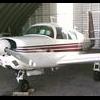Running a tank dry in flight
-
Members Online
- philiplane
- Ragsf15e
- MatthiasArnold
- ericrynehess
- PT20J
- tim417
- neilpilot
- Laura Storke
- glbtrottr
- jcolgan
- 33UM20C
- Mcstealth
- Colbyw
- Niko182
- Echo
- WBEL
- jma201
- Wingfree
- Joseph Long
- Smroot
- Stubby
- dzeleski
- jlunseth
- Tmooney
- DXB
- Marc_B
- CAV Ice
- Paul Thomas
- PeteMc
- Chris Higgins
- ttflyer
- ArrowBerry
- acekng1
- Shadrach
- ProtoFly
- daytonabch04
- larryb


Recommended Posts
Join the conversation
You can post now and register later. If you have an account, sign in now to post with your account.